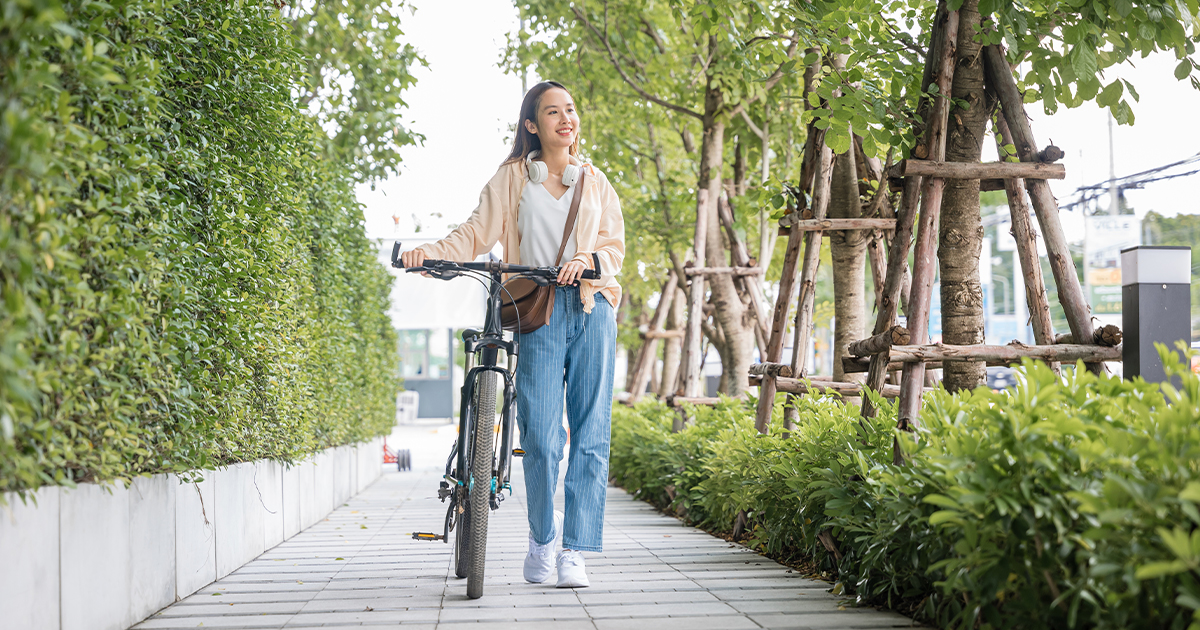Hyundai Motorstudio Senayan Park
Hyundai Motorstudio Senayan Park
Newsroom
The official news from Hyundai Motorstudio Senayan Park and a collection of innovative articles on mobility and sustainability here.
-
Active Transportation: A Healthy and Eco-Friendly Option
- Hyundai Motorstudio Senayan Park Senayan Park 2025.10.15
-
What is Active Transportation?
Active transportation is a way of moving around that involves physical movements, especially walking and cycling. In addition to being an alternative to motorized vehicles, active transportation also encourages a more active and healthy lifestyle.
In many cities, this concept is increasingly encouraged because of its benefits for public health and environmental quality. The government and communities are starting to build supporting infrastructure so that people can switch to active transportation comfortably and safely.
Health Benefits of Walking and Cycling
Walking and cycling are not only means of transportation, but also light exercise that brings many health benefits, especially:
- Improves Heart and Lung Health: This activity improves blood circulation and lung capacity, helping to prevent cardiovascular disease.
- Helps Control Weight: Burns calories so that it helps maintain an ideal weight and prevent obesity.
- Reduces the Risk of Chronic Diseases: Such as type 2 diabetes, hypertension, and some types of cancer.
- Improves Mental Health: Outdoor physical activity can reduce stress, anxiety, and depression, as well as improve mood.
- Develops Balance and Coordination: It is especially important for children and the elderly to prevent falls and injuries.
In addition, active transportation is easy for all people to do without the need for special tools and expensive costs, making it an inclusive and practical choice.
Positive impact on the environment
The switch to active transport brings real environmental impacts:
- Lowers air pollution: fewer motor vehicles mean reduced emissions of polluting particles and gases that harm health.
- Reduced noise: public spaces become quieter and more comfortable.
- Saves fossil energy: walking and cycling do not require non-renewable fuels.
- Reduces pressure on road infrastructure: fewer private vehicles help reduce severe congestion in city centers.
Overall, active transportation helps cities become more livable and healthy.
Infrastructure that supports active transportation
For people to switch to active transportation, safe and convenient facilities are needed:
- Dedicated bike lanes: lanes separated from motorized vehicles reduce the risk of accidents and improve cyclist comfort.
- Wide, well-maintained sidewalks: barrier-free sidewalks support pedestrians including the elderly, children, and people with disabilities.
- Safe bike parking: A protected parking facility encourages people to leave their bikes at their destination.
- Good street lighting: adequate lighting increases the sense of safety for pedestrians and cyclists at night.
- Supporting facilities: bicycle repair stations, rest points and access to drinking water make activities more convenient.
In Indonesia, several cities have already started building this infrastructure—for example, bicycle lanes in Jakarta and pedestrian facilities in Bandung—although the scope still needs to be expanded.
Tips for Starting an Active Transportation Lifestyle
Here are some practical tips to start implementing an active transportation lifestyle:
- Start with a short distance: try walking or cycling for short trips such as to the store or school.
- Choose appropriate clothes and shoes: comfort makes you more consistent.
- Plan a safe and attractive route: choose a route with minimal traffic and a pleasant view.
- Bring family or friends: traveling together increases motivation and safety.
- Take advantage of technology: use a map app or activity tracker to find the best route and monitor progress.
- Be consistent: make active transportation part of the routine, not a one-time activity.
Success Stories and Initiatives in Indonesia
Several cities in Indonesia have started to develop active transportation programs. For example, Jakarta builds bicycle lanes and provides public bicycle rental facilities. Other cities such as Bandung and Surabaya are also developing city parks and pedestrian-friendly pedestrian paths.
This initiative has received a positive response from the community and is an important first step to change mobility patterns in a more sustainable direction.
The Role of Government and Society
The success of active transportation cannot be separated from the role of the government in providing infrastructure and supporting policies. The government can encourage active transportation use through:
- Provision of safe bicycle lanes and sidewalks.
- Public awareness campaign about the benefits of active transportation.
- Incentives for residents who use environmentally friendly vehicles.
Meanwhile, the community must also actively participate by changing habits and supporting existing programs.
Active transportation is a smart choice that provides great benefits for health and the environment. By walking or cycling, we not only maintain physical fitness but also help increase environmental awareness.
Infrastructure support and shared awareness are key so that this lifestyle can be widely implemented. Start small and involve families and communities to create a healthier and more sustainable environment.




